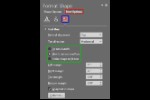The main purpose of adding animation to any slide object is to draw the attention of the audience to some concept. After adding animation, you can set the animation event, and also the speed of the animation. To make it more interesting, you may also want some sound to play along with the animation. The combination of movement and sound makes it compelling for your audience to focus on the object that is being animated. However, this sort of pizzazz only works if you use sound sparingly to highlight the most important part of your presentation. Animation sounds play along with the animation. It is important that you use the perfect sound type for any animation, as using clapping or blasting sounds is very cliché. Now that we have made you aware of the benefits and caveats of using sounds within animations in PowerPoint, let us go ahead and learn how to do so.
Follow this procedure to add sound to your animation in PowerPoint 2011 for Mac:
- Make sure that your slide has an animated slide object. Select the slide object and access the Animations tab of the Ribbon. Within this tab, click the Reorder button, as shown highlighted in red within Figure 1, below.
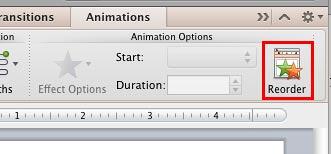
Figure 1: Reorder button within the Animations tab - Doing so brings up the Custom Animation tab of the Toolbox as shown in Figure 2, below. Within the Animation order section, select the animation for which you want to add sound effect, as shown in Figure 2. Now, click on the Effect Options pane, as shown highlighted in red within Figure 2.
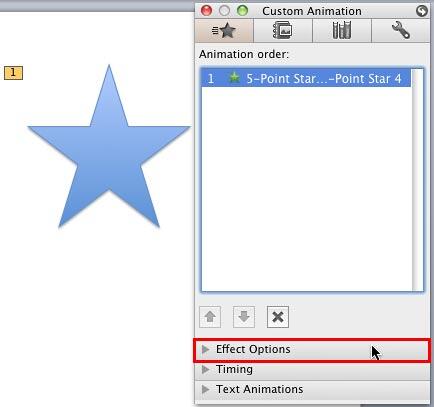
Figure 2: Animation selected within the Animation order section - Doing so reveals the options within the Effect Options pane, as shown in Figure 3, below. Select the Sound option, as shown highlighted in red within Figure 3.
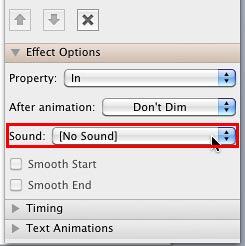
Figure 3: Sound option within Effect Options pane - Doing so reveals the Sound drop-down list, as shown in Figure 4, below. In this list, you can select any of the preset sounds that PowerPoint offers. These have names such as Arrow, Breaking Glass, Bubbles, Camera, etc. The sounds are of short duration, typically under 2 or 3 seconds. In Figure 3, above, you can see that the No Sound option has been selected within the Sound drop-down list, indicated by a tick mark in front of it. Click on any other sound such as Arrow, as shown in Figure 4 to apply it to the animation.
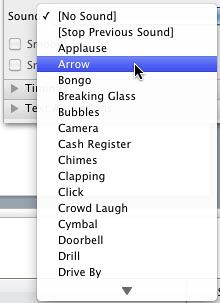
Figure 4: Arrow sound being selected to play along with the animation - If you want to add a sound clip other than the available preset sounds, scroll down to the bottom of the Sound drop-down list where you will find the Other Sound option, as shown in Figure 5, below. Select this option.
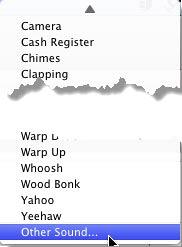
Figure 5: Other Sound option within the Sound drop-down list - Doing so opens the Choose a Sound dialog box, as shown in Figure 6, below. In this dialog box, navigate to the folder where you have saved the sound you want to play along with the animation. Select the required sound file, and click the Insert button, as shown highlighted in red within Figure 6.
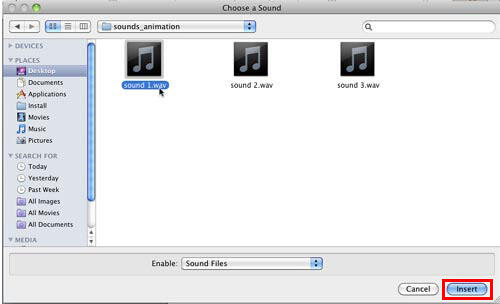
Figure 6: Choose a Sound dialog box WAVs only for Animation Sounds?
- You can only use WAV files for animation sounds, other sound formats such as WMA and MP3 that PowerPoint accepts cannot be used as animation sounds. Also, animation sounds are always embedded rather than linked.
- In addition to the preset sound library in PowerPoint, and Other Sound option, you will also find two more options at the top of the Sound drop-down list. These are No Sound and Stop Previous Sound, as shown highlighted in red within Figure 7, below.
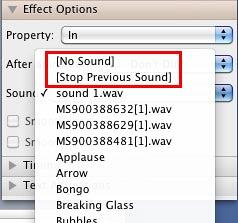
Figure 7: No Sound and Stop Previous Sound options within the Sound drop-down list - Here is an explanation of what these options do:
No Sound
- This is the default option. Choosing this option after you add a sound to your animation provides a quick way to remove sound from your animation.
Stop Previous Sound
- Lets you stop the sound playing along with a previous animation. Sometimes you may add a longer sound clip and you may not want it to play longer. In that case, for the next animation, select the Stop Previous Sound option to stop the previous animation's sound from playing further.
- After adding the required sound, click the Play button within the Preview group, as shown highlighted in red within Figure 8, below to preview the animation. You can hear the added sound playing along with the animation.
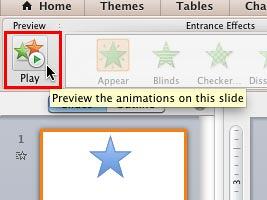
Figure 8: Play button within Preview group - Save your presentation often.









